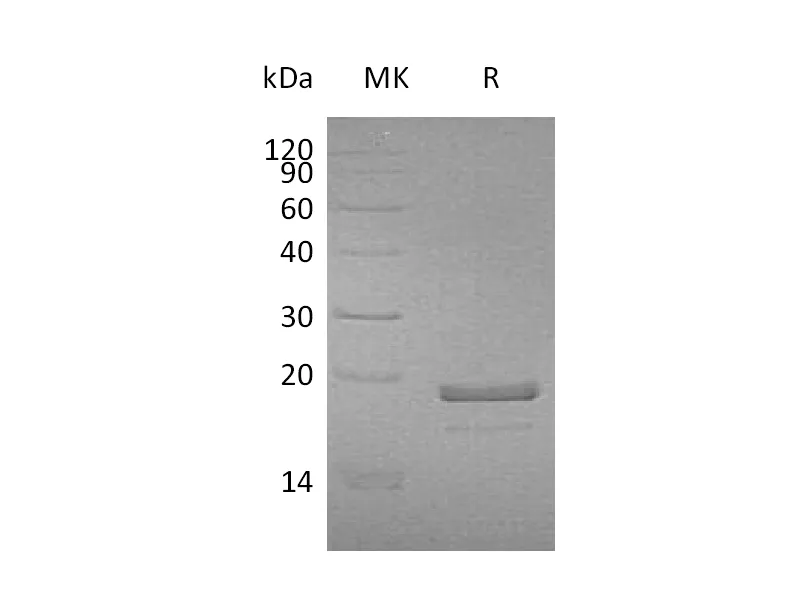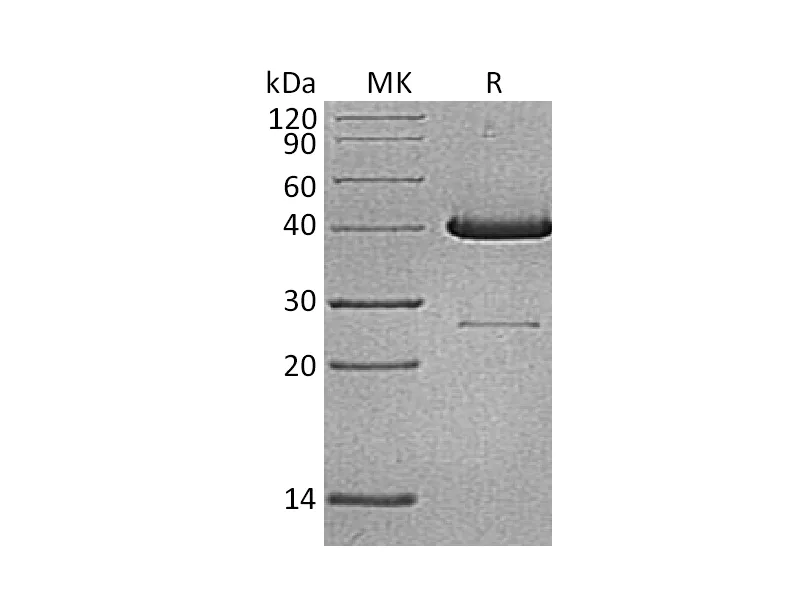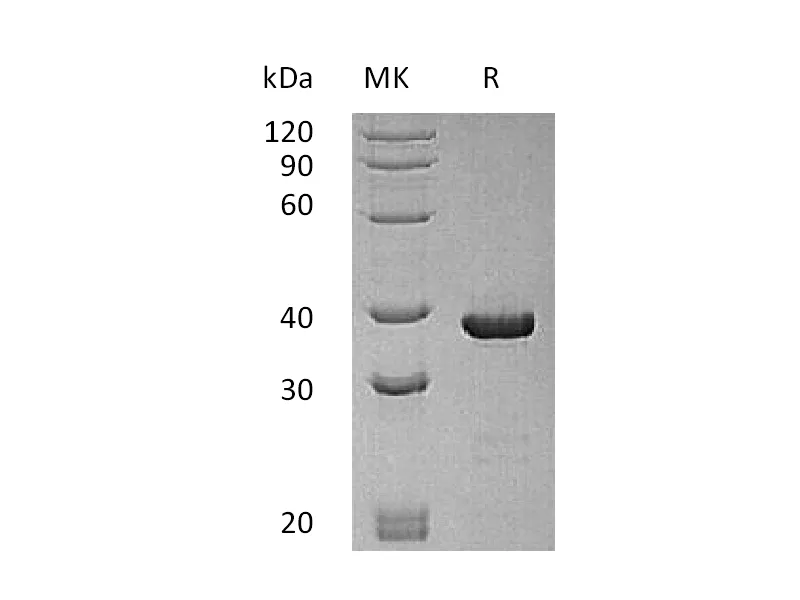| 产品名称 |
Recombinant Human SCARB2 (C-6His) |
| 英文名称 |
Scavenger Receptor Class B Member 2/Scarb2 |
| 纯度 |
Greater than 95% as determined by reducing SDS-PAGE |
| 内毒素 |
<1 EU/µg as determined by LAL test. |
| 蛋白构建 |
Recombinant Human Scavenger Receptor Class B Member 2 is produced by our Mammalian expression system and the target gene encoding Arg27-Thr432 is expressed with a 6His tag at the C-terminus. |
| Accession |
Q14108 |
| 表达宿主 |
Human Cells |
| 种属 |
Human |
| 预测分子量 |
47.59 KDa |
| 制剂 |
Lyophilized from a 0.2 μm filtered solution of PBS, pH 7.4. |
| 运输方式 |
The product is shipped at ambient temperature.Upon receipt, store it immediately at the temperature listed below. |
| 稳定性&储存 |
Store at ≤-70°C, stable for 6 months after receipt.Store at ≤-70°C, stable for 3 months under sterile conditions after opening. Please minimize freeze-thaw cycles. |
| 复溶 |
Always centrifuge tubes before opening.Do not mix by vortex or pipetting.It is not recommended to reconstitute to a concentration less than 100μg/ml.Dissolve the lyophilized protein in distilled water.Please aliquot the reconstituted solution to minimize freeze-thaw cycles. |
| 分子别名 |
| Lysosome Membrane Protein 2; 85 kDa Lysosomal Membrane Sialoglycoprotein; LGP85; CD36 Antigen-Like 2; Lysosome Membrane Protein II; LIMP II; Scavenger Receptor Class B Member 2; CD36; SCARB2; CD36L2; LIMPII |
| 背景介绍 |
| Scavenger Receptor Class B Member 2 (SCARB2) is a type III multi-pass membrane glycoprotein that is located primarily in limiting membranes of lysosomes and endosomes on all tissues and cell types so far examined. Earlier studies in mice and rat suggested that this protein may participate in membrane transportation and the reorganization of endosomal/lysosomal compartment. The protein deficiency in mice was reported to impair cell membrane transport processes and cause pelvic junction obstruction, deafness, and peripheral neuropathy. Further studies in human showed that this protein is identified as a receptor for EV71 (human enterovirus species A, Enterovirus 71) and CVA16 (coxsackievirus A16) which are most frequently associated with hand, foot and mouth disease (HFMD). Mutations in this gene caused an autosomal recessive progressive myoclonic epilepsy-4 (EPM4), also known as action myoclonus-renal failure syndrome (AMRF). Alternatively spliced transcript variants encoding different isoforms have been found for this gene. In addition, SCARB2 also has been shown to bind thrombospondin-1, may contribute to the pro-adhesive changes of activated platelets during coagulation, and inflammation. |
注意事项
本司产品仅用于科研,不用于临床诊断和治疗




